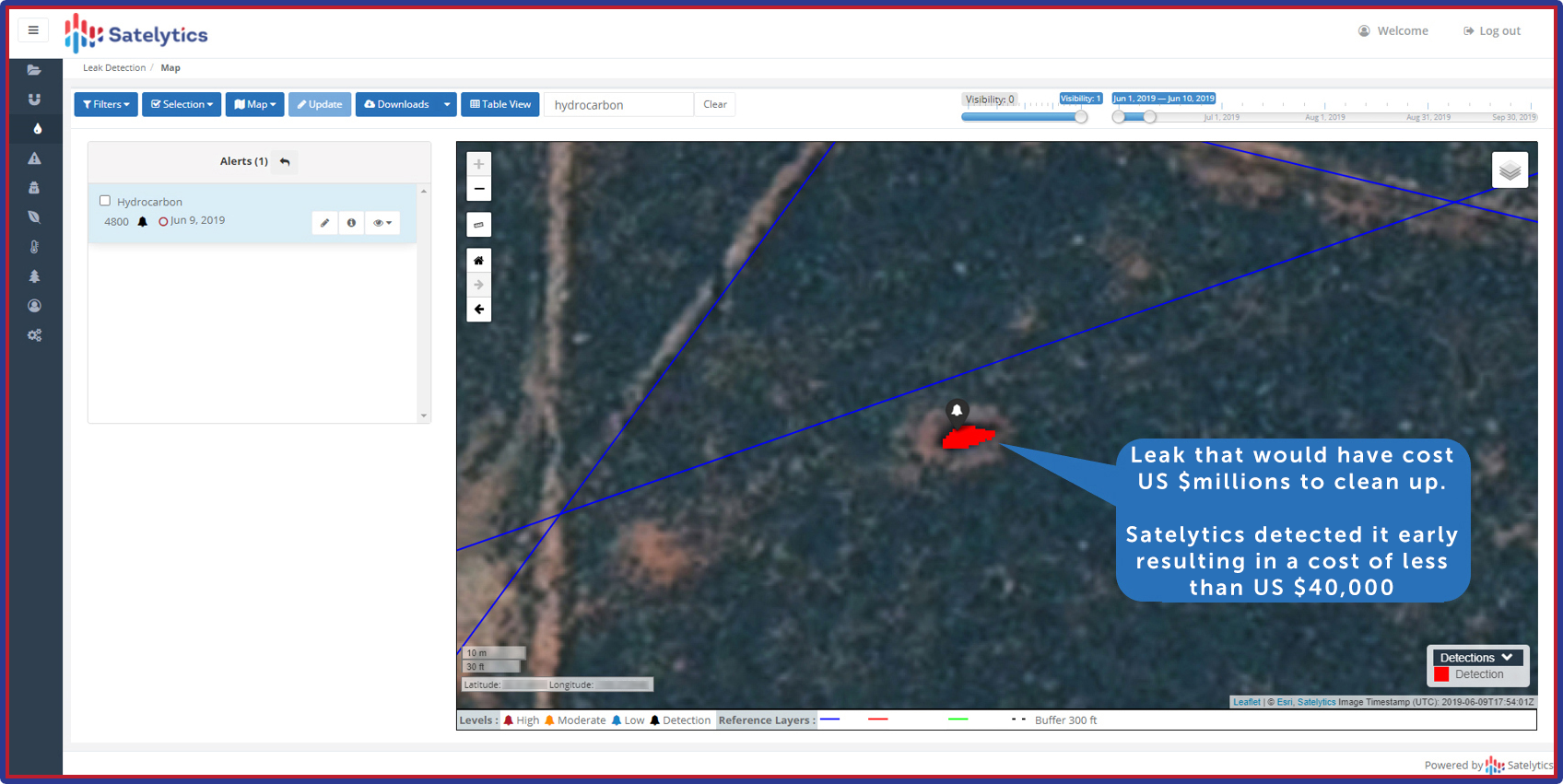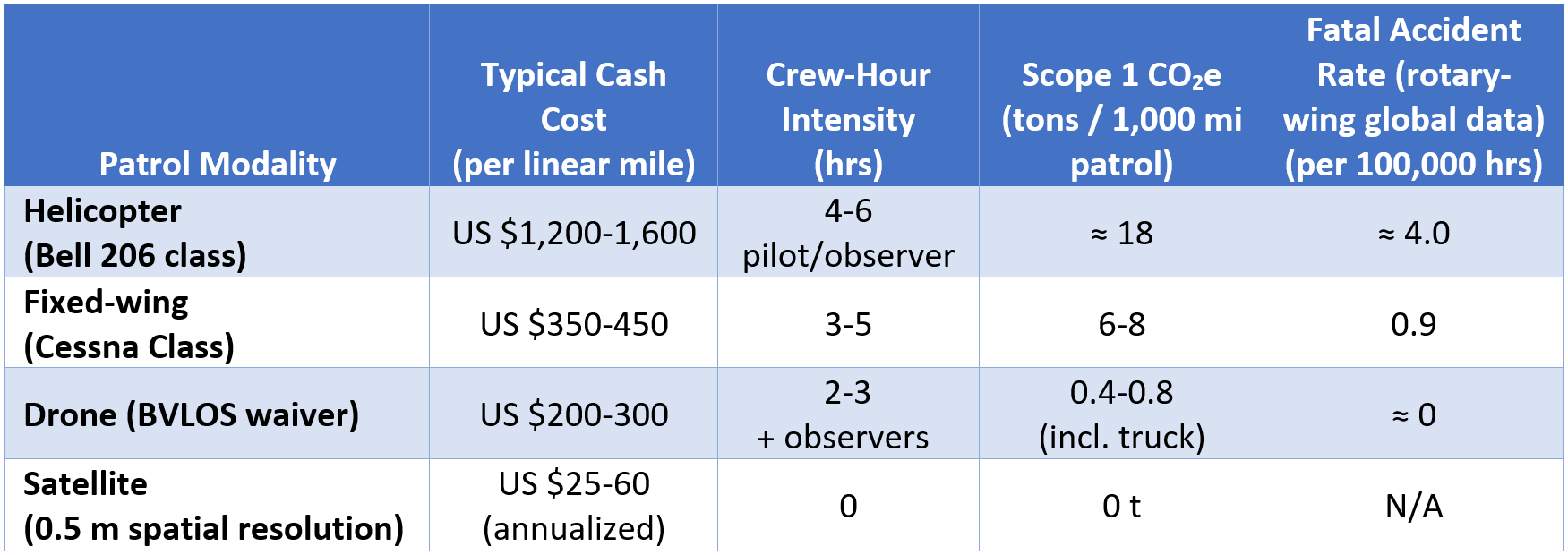
• Pipeline

• Pipeline
With the Direct Final Rule (DFR) now lodged in the Federal Register, PHMSA has slammed the door on decades of uncertainty: right-of-way (ROW) patrols can be performed by "imaging via satellite" under §§192.705(c) & 195.412(a). Effective October 9, 2025, pipeline operators no longer need to ask whether satellite evidence will pass audit muster; it is now written, chapter and verse, into the Code of Federal Regulations.
The rule also:
Bottom line: Satellite-based geospatial analytics are no longer a technology pilot. They are a statutory tool. Delaying adoption is no longer about regulatory risk. It is purely a commercial choice.

Monitor for liquid leaks, gas leaks, encroachment, land movement, etc.

Assumes a 1,000-mile liquids system (26 patrols/yr) and gasoline support vehicles where applicable. CO2 values exclude Scope 2 data center electricity.
Putting numbers together: replacing the mandated 26 helicopter patrols on a 1,000-mile liquids system with weekly 50-cm multispectral satellite-based monitoring yields:
Those are first-order savings. Second-order gains such as automated landslide change detection, encroachment alerts, and methane measurement tend to deliver positive net present value in the very first leak averted, a story most CFOs grasp intuitively.
Publicly available position papers from the rotary-wing lobby stress three pillars: (1) real-time glare, (2) angle of regard, and (3) human judgment on site. Let's stress-test each.
Real-Time Coverage vs. Revisit Frequency Narrative: "Helicopters can respond the same day; satellites are periodic."
Reality: Today's commercial constellations (Maxar Legion and WorldView-3, Airbus Pléiades and Neo) offer daily collections, downlinked within 60 minutes after overpass. In a pure encroachment patrol workflow, you don’t need sub-hour latency — excavation threats develop over days, not minutes. For rupture forensics, image fidelity, not speed, dominates evidentiary value.
Oblique Angle & Vegetation Canopy Narrative: "Low-flying aircraft see under trees."
Reality: VNIR satellites penetrate deciduous leaf-off canopy roughly twice a year.
Hands-on Human Judgment Narrative: "Putting eyes on the ROW lets the pilot land and intervene."
Reality: The over-tasked pilot rarely lands on private land without a chain-of-custody path or sheriff in tow. In practice, pilots radio the control center, which dispatches ground crews (a two-step loop satellites skip entirely). Moreover, 88% of TC Energy's helicopter patrol hours are ferry legs, not on-station observation. That is a lot of risk and fuel for zero inspection value!
Bottom line: operators choosing helicopters shield only PHMSA risk; satellite patrols de-risk four regulators at once.
The DFR does not merely allow satellite patrols; it canonizes them. Every mile still flown with hydrocarbons and rotor blades is a mile the balance sheet, the ESG ledger, and the safety dashboard that will have to defend. Satellites convert that mile into pixels that cost <5 % of a helicopter sweep, emit zero Scope 1 carbon, and never file a workers' compensation claim.
If you are still budgeting for flyovers in FY26, at least run the side-by-side P&L first. Odds are the satellite line wins before you even price the fuel hedge. Talk to us to explore this in depth.